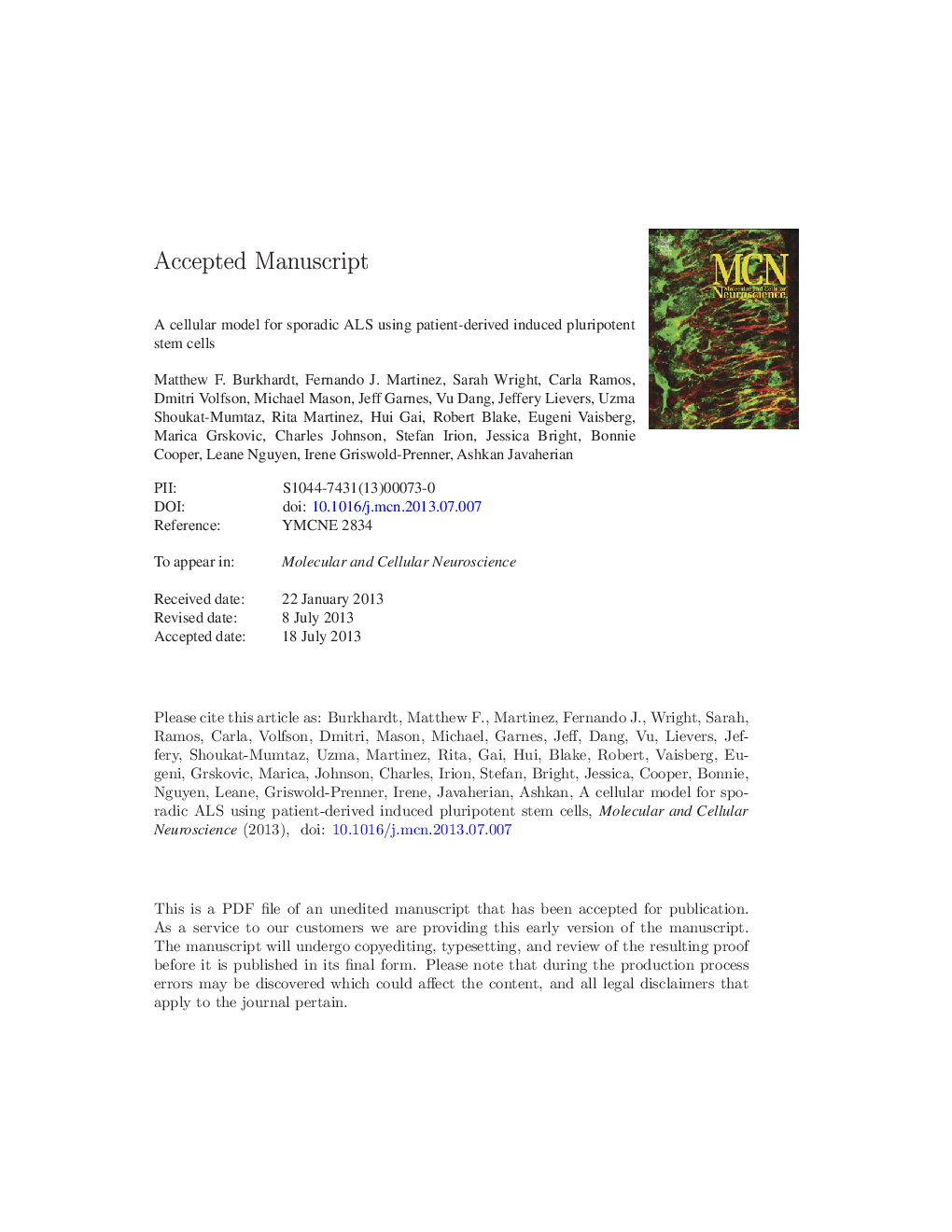| Article ID | Journal | Published Year | Pages | File Type |
|---|---|---|---|---|
| 8478673 | Molecular and Cellular Neuroscience | 2013 | 39 Pages |
Abstract
Development of therapeutics for genetically complex neurodegenerative diseases such as sporadic amyotrophic lateral sclerosis (ALS) has largely been hampered by lack of relevant disease models. Reprogramming of sporadic ALS patients' fibroblasts into induced pluripotent stem cells (iPSC) and differentiation into affected neurons that show a disease phenotype could provide a cellular model for disease mechanism studies and drug discovery. Here we report the reprogramming to pluripotency of fibroblasts from a large cohort of healthy controls and ALS patients and their differentiation into motor neurons. We demonstrate that motor neurons derived from three sALS patients show de novo TDP-43 aggregation and that the aggregates recapitulate pathology in postmortem tissue from one of the same patients from which the iPSC were derived. We configured a high-content chemical screen using the TDP-43 aggregate endpoint both in lower motor neurons and upper motor neuron like cells and identified FDA-approved small molecule modulators including Digoxin demonstrating the feasibility of patient-derived iPSC-based disease modeling for drug screening.
Keywords
Related Topics
Life Sciences
Biochemistry, Genetics and Molecular Biology
Cell Biology
Authors
Matthew F. Burkhardt, Fernando J. Martinez, Sarah Wright, Carla Ramos, Dmitri Volfson, Michael Mason, Jeff Garnes, Vu Dang, Jeffery Lievers, Uzma Shoukat-Mumtaz, Rita Martinez, Hui Gai, Robert Blake, Eugeni Vaisberg, Marica Grskovic, Charles Johnson,
